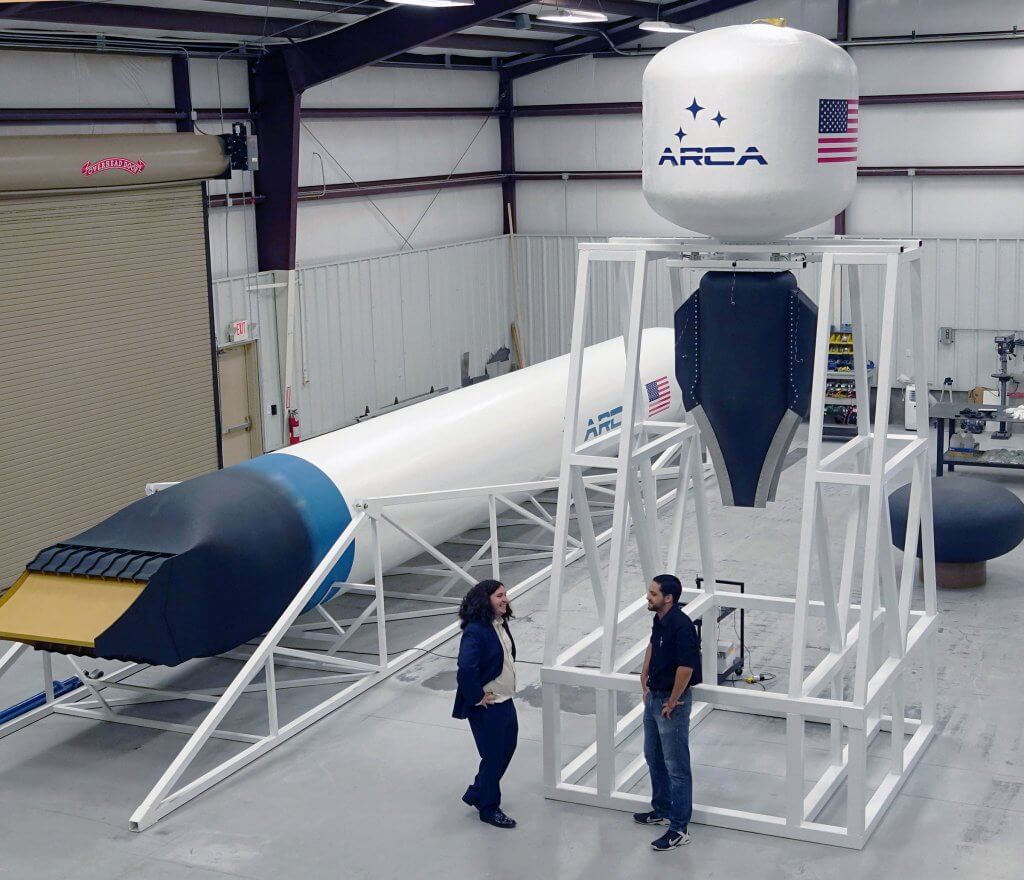As previously flagged by Seradata Space Intelligence (SSI), one possible challenge to reusable launch vehicles is to produce a cheap to build and operate single-stage-to-orbit expendable rocket as proposed by the ARCA Space Corporation. The firm is preparing a 120 km altitude suborbital test flight of its Demonstrator 3 rocket. Ahead of the flight taking place in New Mexico, ARCA has built a ground test stand for its linear aerospike engine and lightweight tankage. If this and the test flight goes well, it will be the first ever flight of such an engine.
An aerospike engine exhaust jet ideally expands from sea level up to space, ensuring superior efficiency at all flight levels. A “classic” bell-shaped nozzle works efficiently at only one flight level, usually at sea level. After that point, the engine is not properly taking advantage of the atmospheric pressure decrease as the gases are contained by the nozzle. An aerospike nozzle allows virtually unlimited expansion ratios, thus significantly increasing the specific impulse of the engine at high altitude. The failed Lockheed Martin X-33 space demonstrator programme was to use one of these engines, but the project failed over the ability to build a liquid hydrogen carrying composite propellant tank.

ARCA Linear Aerospike engine on test stand (right) next to the full size ARCA 2CA rocket design (left). Courtesy: ARCA
The engine uses Hydrogen Peroxide (70%) as monopropellant. Later engines will use a Kerosene/Hydrogen Peroxide bipropellant combination to achieve orbital velocity for the full size HAAS 2CA single-stage-to-orbit rocket which is planned to be launched from the Wallops Island launch site in Virginia USA. ARCA projects that this rocket will be able to launch small sized (up to 100 kg) satellites for just US$1 million per flight – about a fifth of the cost of the best of its small launcher competitors.
ARCA Space is a US/Romanian aerospace corporation based in Las Cruces, New Mexico, whose main objective is to develop the most cost-effective and responsive space launchers for commercial access and space exploration purposes.







